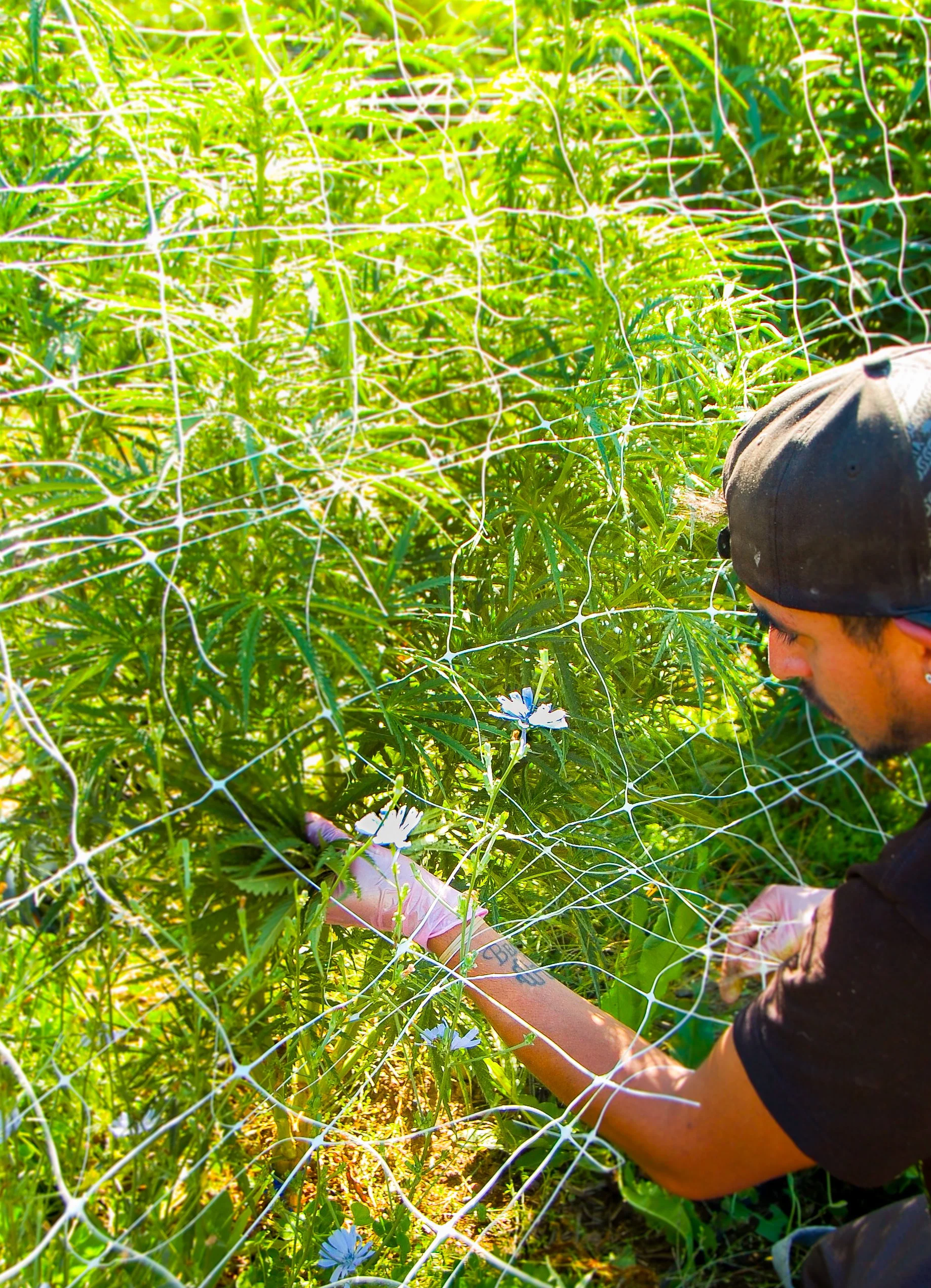Beneficial Garden Plants
Our farm is all organic, which means we don’t use any pesticides, and use natural farming techniques like no-till farming. To keep our plants pest-free, we use beneficial insects like ladybugs to eat all the bad bugs like aphids and spider mites that like to eat our plants.
But how do we keep them around?
Every so often we place a large order of these beneficial insects (like Ladybugs and Aphidius Colemani, which are a type of small wasp). They come in little cups that we sprinkle over our plants. But obviously, they can fly away if they want to. So we have to try and keep them around.
These guys like flowers. Pollen and nectar (sweet stuff) are a great insect-attractor. Daisy-shaped flowers provide space for insects to rest as well as the nectar and pollen for them to eat, so they seek out those specific flowers to use as a bug hotel.
Oregon has lots of wildflowers that pop-up all over the place, like this beautiful blue Chicory. It isn’t native to Oregon, but was introduced a long time ago and has many great properties. In large numbers, they can be harmful to gardens with small plants as they are invasive and will compete with the young plants for water and nutrients (from the sun and soil). But if they’re kept in check, they can be a helpful insect-attractor, as well as a fun pop of color.
Once the insects are near our plants, they’ll notice the harmful insects we don’t want. And they will hopefully stay to feast on them.
Keeping beneficial plants like wildflowers is also good for the earth. Plants rooted in and on the soil keep it from washing away in heavy rains, and soil erosion is a big concern for farmers. It pollutes the rivers and streams with sediment and minerals we want to keep in the ground. Along with our no-till farming process, these plants help us keep our farmland intact and as healthy as possible.
Source:“Attracting Beneficials” Portland Nursery. 2025. Webpage https://www.portlandnursery.com/garden-projects/attracting-beneficials



